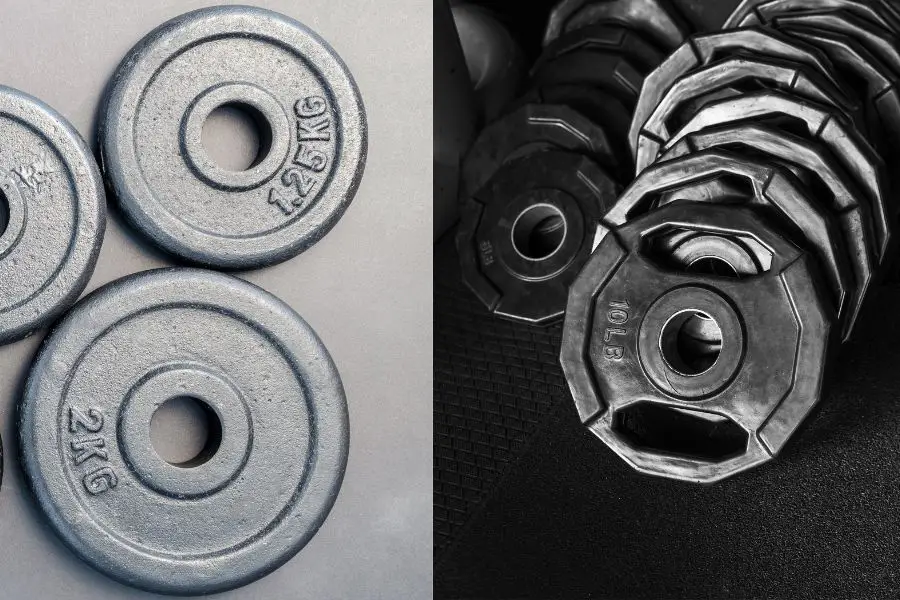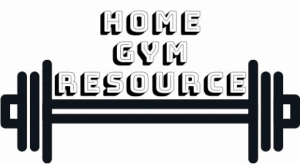Many cast iron plates are covered with a softer material. In general this coating can be made from rubber or urethane. They both have a lot of the same benefits but there are some big differences as well. Let’s find out what the differences are and what’s the best choice.
Urethane coated cast iron plates are more durable and usually higher quality although this does come at a higher price. Rubber is a softer material that is a little less durable but does provide more grip, noise damping and impact protection.
Rubber coated plates are generally better for home and garage gyms since they don’t see the intense use plates in a commercial gym do. You can find the best weight plates for a home gym here.
In the rest of this article we’ll go into how both materials are the same and how they’re different. We’ll also figure out what the best choice is.
Contents
Coated Weight Plates
Notice: We’re talking about coated cast iron plates in this article, not bumper plates.
Coated or encased weight plates have a cast iron core and are then covered in a softer material. This cover can be made from urethane or rubber. These materials have a lot of the same benefits but there are some differences as well. There are a few plates that have other material coatings like plastic. These other ones should be avoided in general.

Coated weight plates, whether they are rubber-coated, urethane-coated, or have another type of protective coating, offer several advantages over bare iron plates:
While coated weight plates offer quite a few advantages, it’s important to note that they come at a higher price compared to bare iron plates.
If you’re interested in more different types of weight plates, you can find a comprehensive list here.
Differences Between Rubber and Urethane Coated Weight Plates
So now we got the benefits of coated plates out of the way, let’s look at the different casing materials. Two very popular materials are rubber and urethane.
Here are the pros and cons of both types.
Pros and Cons of Rubber Coated Plates
Rubber is a softer, more pliable, material than urethane. That means you get better noise damping, grip and protection. and as a bonus it’s quite a bit cheaper than urethane. On the flipside it’s also a bit more vulnerable.
Pros and Cons of Urethane Coated Plates
Urethane is a harder, stronger material than rubber. It can also be turned into many different colors. That means urethane covered plates generally look nicer and the coating is extremely durable.
There are a few downsides to this though; it provides less noise damping, grip, and impact protection compared to rubber. The durability also comes at a higher price.
Are Urethane or Rubber Coated Weight Plates Better?
The choice between rubber and urethane isn’t straightforward since they both have different benefits and drawbacks.
For home and garage gyms, rubber coated plates are often the better choice. Rubber is still durable enough to last a very long time, especially if you treat your equipment nicely. If you don’t have the budget for urethane plates, these will serve you well.
It also depends on your noise damping and protection needs. If you’ve got a good rubber gym floor, this will reduce noise quite a bit. That means the harder urethane is still quiet enough and won’t damage the floor anyways. However, a rubber floor will also extend the lifespan of rubber coatings. What does that mean? It’s better to spend your money on good flooring than more expensive weight plates.
For commercial gyms, urethane is the better choice. Equipment in commercial gyms sees much more use, and people tend to be a little less careful with stuff they don’t personally own. The extra durability of urethane comes in really handy in that case.
The coating is a small part of picking the right weight plates. Click here to find a guide that walks you through picking the right weight plates.

